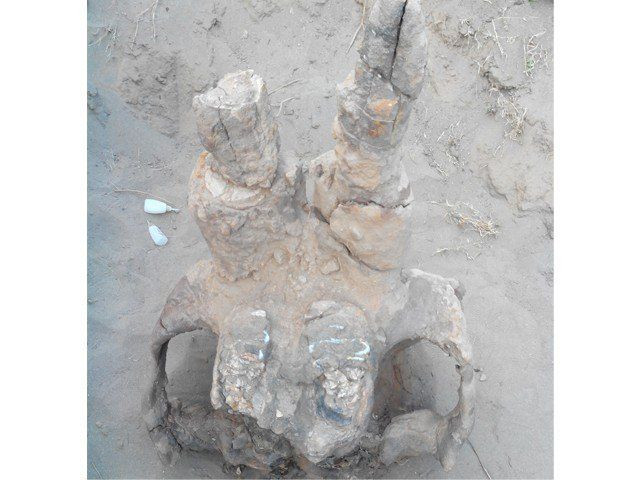Researcher Unearths 1.1 Million-Year-Old Prehistoric Female Elephant Skull In Pakistan

A team of researchers from the Zoology department of Punjab University, Pakistan, have discovered a massive skull of a 1.1-million-year old “stegodon” female elephant. The fossilized skull was recovered from the Panjan Sher Shahana Hills area in district Gujrat.
According to the researchers, the species of the elephant discovered is a closely-related group of the mammoth. Due to its massive size, it took nearly two days for the researchers to excavate the entire fossil without damaging it. The recovered fossil weighs around 265 pounds.
Professor Syed Ghayoor Abbas from the university had been conducting an excavation around the area since the last 1.5 years. While dating experiments confirmed the skull to be around 1.1 million years old, the anatomical structure of the fossil revealed that it belonged to a species of elephant found in Africa, Europe and Asia.
“The tusks are small. It means that it is a female,” said Abbas, in a statement. “Overall, it is in a good condition. The ventral side is slightly damaged but the posterior is fine.”
The skull of the prehistoric elephant measures around 38 centimeters (1.2 feet) long and 28 centimeters (nearly a foot) wide. Since the modern elephants are only half of that size, the researchers believe that the discovery of the fossil will help the team study the hereditary, evolutionary and genetic changes involved with the emergence of the elephants that exist today.
Abbas has already recovered a number of fossils of deer, pigs and rhinos from the same area in last one year. However, this is the first time that the fossils of a prehistoric animal have been recovered. With the addition of the latest discovery, the age of the fossils unearthed so far ranges between 20,000 and 1.1 million years.
The researcher further said that a number fossilized animal remains are expected to present in the Pabi area since those are believed to have moved into the region because of the presence of a large water body. The team is planning to further conduct excavations in the area in December 2015.
© Copyright IBTimes 2025. All rights reserved.



















